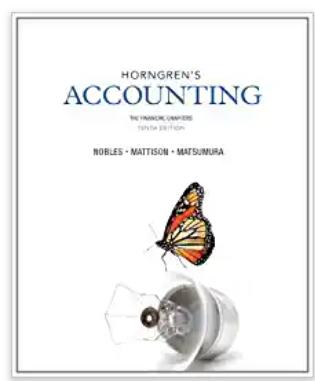Question
The auditing department of Alco Products was contacted by the manager of accounting for the metalstamping division who informed it that one of their plants
The auditing department of Alco Products was contacted by the manager of accounting for the metalstamping division who informed it that one of their plants had been experiencing inventory shortages. The manager stated that he believed the finished goods book inventory had been overstated and that this condition had been discovered as a result of an analysis of material consumption that indicated that the finishedgoods inventory level should be higher than it was.
The auditors learned that the aluminum was received in twopound sheets, 100 sheets to a bundle, and four bundles to a pallet and was stored in the manufacturing area to facilitate access during production. When received, a materialreceived record was prepared, pre-numbered and used for receipt of items entering the plant. The record was sent to the accounting department where it was compared to a copy of the purchase order and held, pending receipt of the invoice. As the material was introduced into the manufacturing process, a requisition was prepared and forwarded to the accounting department.
After the material was requisitioned from the rawmaterial inventory, it was fed into machines where 24 finishedgoods pieces were stamped out of each sheet. The skeleton (rawmaterialsheet remainder) was then placed in a scrap bin; and the finishedgoods pieces were packed 200 pieces to a package, a maximum of 50 packages to a pallet. A twopart load ticket was then prepared, and a copy was sent to the accounting department for updating the perpetual inventory records. The other accompanied the load to the finishedgoods warehouse.
The scrap from the production process was collected in a scrap bin, and the full bins were emptied into a trailer located at the scrap dock. At his convenience, the scrap dealer came to the plant, dropped off an empty trailer, and picked up the full one. When the scrap dealer left the plant, the gate guard recorded the scrap dealer's billoflading number. If the guard was making his hourly security inspection, the scrap dealer was responsible for recording this number. If a filled trailer was not picked up, the scrap dealer was contacted and requested to pick it up.
The scrap dealer took the trailer to a local business that had a truck scale, weighed the truck, and recorded the weights. The scrap dealer sent a copy of the weight ticket to the plant along with the check and the remittance advice for the value of the scrap. These data were used to develop the scrap loss. The accounting department received the check, compared the weight tickets to the remittance advice, and verified the value per pound to the contract.
When the material was received from the workingprocess area, warehouse employees verified the loadticket count; and the pallets were stored. At the time of customer shipment, a pre-numbered bill of lading was prepared with copies for the accounting department, customer, shipping department files, and a gate guard who verified the load. The accounting department verified the shipping information on the bill of lading to the original shipping authorization and invoice to the customer, accounted for the bills of lading through a sequential numerical checkoff list, and posted the perpetual inventory records from the copy of the bill of lading forwarded from the gate guard.
The manager informed the auditors that, at month's end, production employees from each production stage performed the inventory counts for the raw materials and workinprocess inventories and reported them to the accounting department. The finishedgoods inventory was controlled through perpetual inventory records that were reconciled to the general ledger at the end of each quarter. WIP material consumption was then calculated based on transfers to finished goods plus standard scrap loss currently at 10 percent (based on scrap sales remittances from the scrap dealer) of the material transferred to the finishedgoods inventory. Based on the analysis of beginning and ending inventory balances, material receipts and material consumption, it was determined that there should have been more finished goods in the inventory.
What is the most likely cause of the finished inventory shortage? Please explain your reasoning.
Step by Step Solution
There are 3 Steps involved in it
Step: 1

Get Instant Access to Expert-Tailored Solutions
See step-by-step solutions with expert insights and AI powered tools for academic success
Step: 2

Step: 3

Ace Your Homework with AI
Get the answers you need in no time with our AI-driven, step-by-step assistance
Get Started


